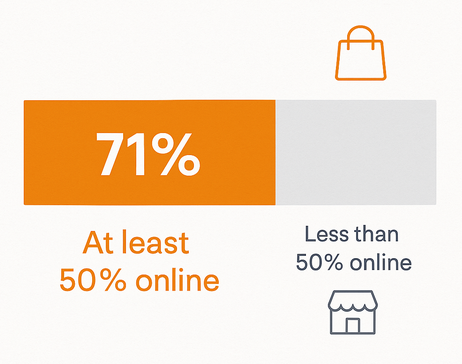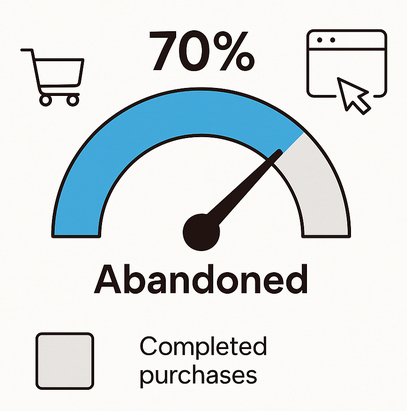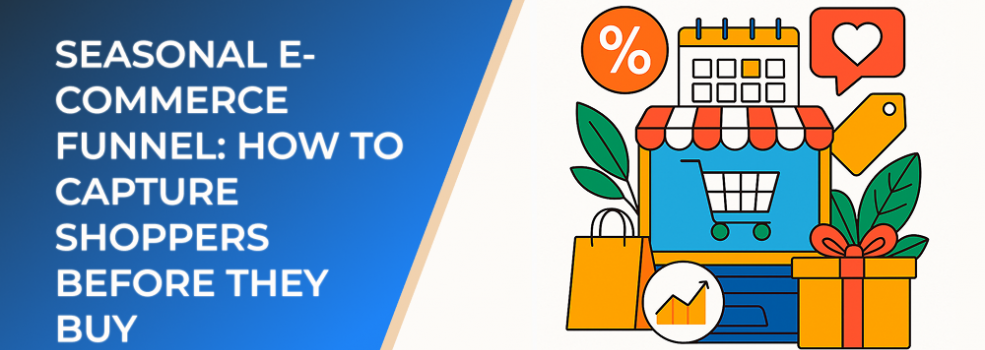Seasonal e-commerce peaks create a surge of high-intent traffic, but the brands that win are those that begin nurturing shoppers long before they are ready to buy. With increased competition and rising customer acquisition costs, capturing attention early in the funnel has never been more important. By understanding how shoppers browse, compare, and decide, businesses can build a funnel that moves them from awareness to purchase with minimal friction.
Why Early Funnel Engagement Matters
Research consistently shows that holiday shoppers begin planning weeks before making a purchase. Nearly 60% of seasonal consumers start browsing gift ideas at least a month in advance. During this stage, they are not necessarily ready to buy, but they actively engage with content, explore brands, and compare prices.
This window offers a powerful opportunity to create familiarity, build trust, and ensure your brand stays top-of-mind when it is time for them to purchase.
Stage 1: Awareness — Building Visibility Before Peak Season
The top of the funnel is about generating early interest. Seasonal shoppers are highly receptive to inspiration and helpful information.
Strategies for Awareness
-
Highlight new collections, seasonal offers, or curated gift ideas.
-
Use broad audience targeting to introduce your brand to new shoppers.
-
Share educational or inspirational content that eases decision-making.

Useful statistic: Over 70% of holiday shoppers discover new brands online during the seasonal period. This makes early visibility essential.
Stage 2: Consideration — Capturing Warm Audiences
Once shoppers have shown interest, the next step is guiding them deeper into the funnel.
What Matters in This Stage
-
Price comparison tools
-
Product reviews
-
Social proof
-
Gift guides and product selectors
Shoppers who engage with product pages or spend time browsing have significantly higher purchase intent. Studies show that users who revisit a product page are up to 2.5 times more likely to convert.
Stage 3: Intent — Turning Browsers Into Qualified Prospects
By this stage, shoppers have narrowed their options and need a final push toward purchasing.

Around 7 in 10 shoppers abandon their online carts before completing a purchase
Key Tactics
-
Retarget visitors who viewed products or added items to cart.
-
Use reminders to highlight limited-time holiday deals.
-
Showcase frequently bought-together items or bundles.
Stage 4: Conversion — Securing the Sale
The final step is ensuring that the buying process is fast, smooth, and reassuring.
Optimizations for Higher Conversion Rates
-
Offer multiple payment options
-
Ensure checkout is mobile-friendly
-
Display clear shipping deadlines
Consumers are particularly sensitive to fulfillment expectations during seasonal peaks, with 55% saying they abandon purchases due to unclear or slow shipping.
Stage 5: Post-Purchase — Turning Seasonal Buyers Into Repeat Customers
Seasonal shoppers can become long-term customers when nurtured properly.
Retention Strategies
-
Send follow-up emails with product tips or care instructions.
-
Suggest complementary products.
-
Encourage loyalty sign-ups.
Returning customers can drive up to 40% of revenue during peak seasons, making retention a high-impact focus.
Putting It All Together: A Complete Seasonal Funnel
A seasonal e-commerce funnel is not just about increasing sales during the holidays. It is about building a predictable system that moves shoppers from first touch to loyal customer. Brands that begin early, personalize their messaging, and address shoppers' needs at each stage consistently outperform those that rely solely on last-minute promotions.

